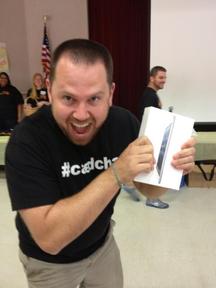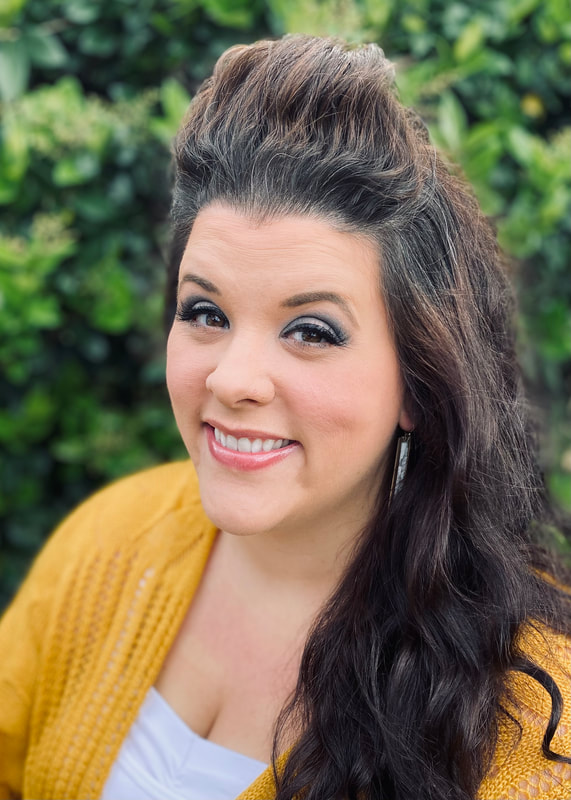 Back in January, the AppsInClass team had the pleasure of attending #EdCampLA. We had such a fantastic experience - from attending first-rate sessions, to enjoying a catered lunch, and participating in an afternoon #EduSlam chock full of resources - that we decided we absolutely had to do our best to bring the EdCamp experience to the southern California desert where we live. Now, less than eight months later, we just wrapped up the first ever #EdCampPS this afternoon. Wow! In case you're unfamiliar with the EdCamp un-conference movement, EdCamps are organic, teacher-driven professional development opportunities that offer an alternative to the top-down, high stakes driven development that is frequently mandated in schools and districts across the country. During an EdCamp, teachers gather together and decide on the day how they would like to spend their time. (Bill Selak's EdCamp video does a fantastic job explaining how an EdCamp works.) Why EdCamp? The EdCamp model appeals to me on so many levels, but perhaps my favorite thing about EdCamps is that I am a firm believe in the addage, "Iron sharpens iron." The group think-tank concept is such a valuable reason to attend an EdCamp. Today, during a session on using Twitter professionally, Kevin Fairchild shared this quote - which I also think applies to EdCamps - and Karl Lindgren-Streicher shared it out:
Planning Lesson One: Get Connected Twitter really played an essential role in our planning process. To begin organizing #EdCampPS, fellow chairperson John Stevens (@jstevens009) and I met with Matt Arguello (@Matt_Arguello) and Lisa Dabbs (@teachingwthsoul), who generously imparted advice via Google Hangout. We found that we needed to ask for advice from others at multiple points along the way, and we kept coming back to our Twitter contacts for help. Twitter was also our primary marketing tool, which was a fantastic way to reach educators around the state. Planning Lesson Two: It Doesn't Hurt to Ask Because #EdCampLA set such a high bar for excellence, we felt quite a bit of pressure to try our best to come close to offering such a great experience to #EdCampPS attendees. Our first hurdle was fundraising. Usually, I am not very good at asking for things. As a teacher, I'm used to begging, borrowing, "rescuing," and pleading for materials. Learning to be straightforward and ask an organization for sponsorship was a good lesson to learn - and one that paid off. A few of us worked together to ask anyone we could think of for support (whether financial or in-kind donations). Most of the people and organizations I spoke with were very receptive, and I quickly realized it doesn't hurt to ask for support. In particular, Palm Springs Unified School District really came through by taking care of custodial and insurance costs, and helping to cater lunch. Our local chapter of CTA, Palm Springs Teachers Association, graciously helped finance lunch as well, so we were able to offer attendees a cost-free experience on site. In the end, we even had such an excess of funds (many of which came in at the last possible minute), that we were able to purchase some really stellar raffle items for giveaway, including two Samsung Chromebooks and two iPad Minis! So, a word of advice if you're wanting to plan an EdCamp in your neck of the woods: Tap into teacher-friendly contacts you may already have in your community. Planning Lesson Three: Over-Invite, Under-Order Two big lessons we learned today were that we really need to increase the cap for registration next year, and we need to under-order on catering and supplies. As a team, we were wary of biting off more than we could chew, so we decided to plan for 100 attendees and cap our registration at 150. We were told to expect a certain amount of no-shows on the day of the event and a certain amount of cancellations in the days leading up to the event. In reality, by the evening before #EdCampPS, our Eventbrite registration dropped by 9 people, and this morning we had 62% of registered attendees check in. There were a few people who showed up who did not pre-register, but we were easily able to accommodate them, so our numbers were actually slightly higher than the screen capture above. However, next year we will likely increase our cap to 250 and expect approximately 150 to check in. When ordering food for breakfast and lunch for EdCampPS, we ordered enough to feed 150 people and ended up with a ton of leftover food. In the future, I think we will under-order and plan for the attrition that can reasonably be predicted. I think we'll also let our caterer know that we may be calling the morning-of to adjust the order as needed. Making those kind of flexible arrangements ahead of time would have been beneficial to us this time around. Karl, who is an #EdCampSFBay organizer, also recommended that we send out confirmation emails sooner next year, so attendees who are no longer able to make it will have time to notify us. I think that's a great idea, because then we'll will have more time to publicize open spots and build our registration to capacity again. Planning Lesson Four: Scaffold #EdCamp Newbies One area where we can improve next year is in regards to the amount of people we have tasked with scaffolding first-time EdCamp attendees. Several of our session slots were never filled because we had a very high volume of first time attendees and we didn't think to appoint any one specific person to actively inform newbies about how EdCamps work, how to utilize the session board, etc. We were all prepared to answer questions and help others, but we really needed to earmark one or two people for the express purpose of engaging new folks in the session planning process. While the feedback I received was positive, and attendee tweets were positive as well, I think improvement in this area is warranted just to make sure everyone has a voice. An EdCamp Success Story As I sit here writing this blog post, I am also reading tweets from the #EdCampPS hashtag for inspiration, perspective, and validation. Incredibly, it seems as if our first stab at organizing an EdCamp was a success! There were times in the last two weeks that I despaired of ever getting all of our ducks in a row in terms of facilities, sponsors, etc., but in the end - the EdCamp spirit is powerful and all of our planning efforts aligned to provide an environment conducive to the type of on-the-spot professional development magic that EdCamps promote. I am incredibly grateful to everyone who participated in today's #EdCampPS, especially those who traveled in cars for hours and booked airline flights just to be here. Our planning team may have taken care of logistics, but it is all of the attendees who took care of the learning. What an incredible group of amazing educators! As Holly Clark (@HollyEdTechDiva) tweeted:
4 Comments
9/14/2013 01:21:16 pm
This was my first time attending any EdCamp. I brought along two coworkers who were also excited about connecting with other teachers who share an interest in student-centered learning. We all agreed that attending EdCamp Palm Springs was definitely worth the drive from Orange County on a Saturday. We definitely appreciated the free lunch and snacks.
Reply
Jeanne Reed
9/14/2013 02:05:47 pm
Thanks for all the planning and extra effort your whole rock star team put into making EdCamp Palm Springs a magical and memorable learning experience! Loved it! When's the next one?
Reply
Anne Kartun
9/14/2013 03:00:53 pm
My first EdCamp experience did not disappoint!! Favorite part was networking with fellow innovative and motivated educators! Excited to find another and even thinking crazy thoughts about how cool it would be to host one in our area.
Reply
9/14/2013 03:02:47 pm
Thank you for an informative and fun day. The whole thing was so well done, I never would have guessed it was a first launch. I loved the intimacy and putting faces to twitter names, too. So worth missing my Saturday sleep-in!
Reply
Your comment will be posted after it is approved.
Leave a Reply. |
Author: Jessica PackCalifornia Teacher of the Year. CUE Outstanding Educator 2015. DIGICOM Learning Teacher Consultant. 6th Grade Teacher. Passionate about gamification, Minecraft, digital story-telling, and fostering student voices. Download:Archives
June 2020
Categories
All
|




 RSS Feed
RSS Feed